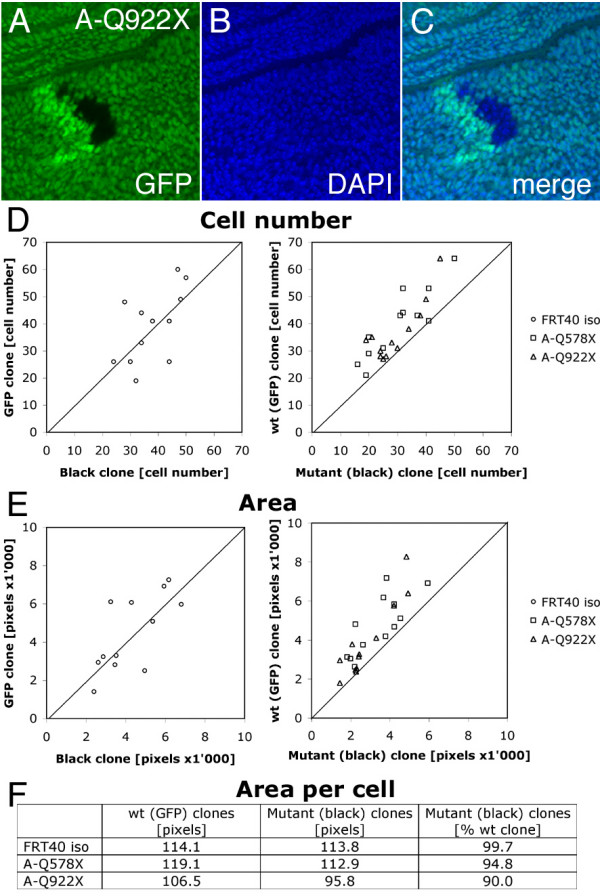Figure 3.

Cell number and cell size are reduced in bunA mutant tissue. (A-C) A part of a wing imaginal disc containing a twin-spot clone is shown. The clone of bunA homozygous mutant cells (black) and its wild-type sister clone (bright green) were induced by the FLP/FRT recombination system (genotype y, w, hsFLP/y, w; FRT40A, Ubi-GFP/FRT40A, bunA-Q922X, heat shock for 25 min at 34°C 24–48 h AED), and larvae were dissected 51–52 h after induction of mitotic recombination. (B) Nuclei are visualized by DAPI staining. (D-E) Statistical analyses of twin-spot clones (n = 12 for every genotype). Control clones (FRT40Aiso) contain roughly the same number of cells (38 ± 7) as their sister clones (39 ± 13) and cover a comparable area (4291 ± 1506 and 4471 ± 1976 pixels, respectively; data points are evenly distributed around the straight line with the slope m = 1). However, cell number and clone area are reduced in bunA mutant clones (shift of data points). Homozygous mutant A-Q578X and A-Q922X clones contain significantly (p ≤ 0.05) fewer cells (30 ± 11 and 30 ± 8, respectively) than their sister clones (40 ± 13 and 37 ± 11, respectively). The areas covered by A-Q578X and A-Q922X mutant clones (3424 ± 1256 and 2826 ± 1216 pixels, respectively) are smaller than the areas covered by their sister clones (4785 ± 1516 and 3903 ± 1939 pixels, respectively; p = 0.013 and p = 0.06). The effect on clone area is slightly more pronounced than the effect on cell number, indicating a decrease in size of bunA mutant cells. (F) The average area of the bunA mutant cells is 5% (A-Q578X) and 10% (A-Q922X) smaller than the average area of the wild-type sister cells.
